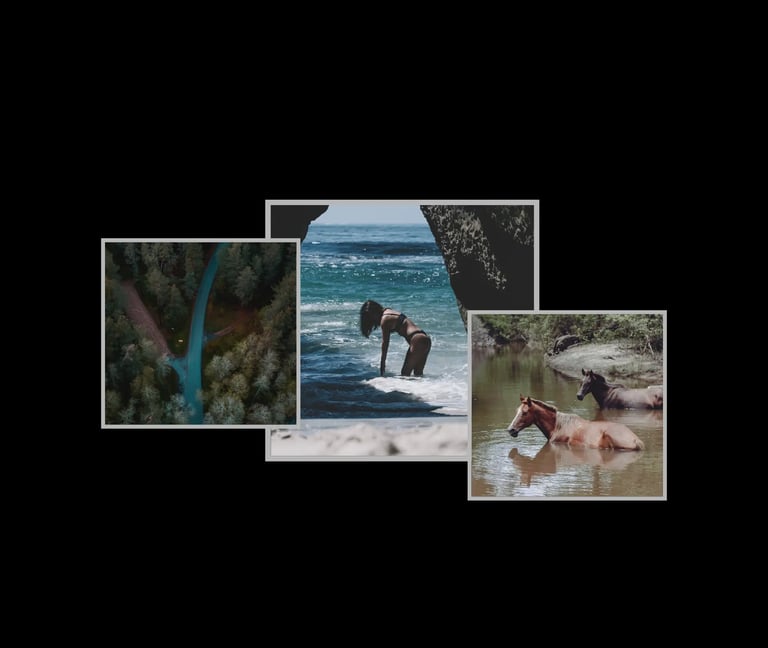The Longevity Blueprint: How to Apply Blue Zone Secrets to Your Life
BIOHACKINGWELLNESS


What if living to 100 wasn’t just about luck or genetics? Around the world, there are regions where people consistently reach old age in remarkable health, free from many of the chronic diseases that affect much of the modern world. These areas, known as Blue Zones, hold the key to longevity—offering a lifestyle blueprint that can be adapted by anyone, anywhere.
The people of Okinawa (Japan), Sardinia (Italy), Loma Linda (California), Ikaria (Greece), and Nicoya (Costa Rica) have been studied for decades, and researchers have identified common habits that contribute to their extraordinary lifespans. While Silicon Valley biohackers chase longevity through extreme diets, high-tech wearables, and costly supplements, Blue Zone residents take a different approach—one that is simpler, more natural, and deeply rooted in community and purpose.
So, what can we learn from them? And how can we bring these longevity secrets into modern life?
What Are Blue Zones?
The term "Blue Zones" was coined by Dan Buettner, a National Geographic journalist who worked alongside researchers to identify five regions where people consistently live longer, healthier lives. These communities don’t just have a high number of centenarians (people over 100 years old)—they also experience low rates of heart disease, diabetes, cancer, and dementia.
The five official Blue Zones are:
Okinawa, Japan – Home to some of the world’s longest-living women, with a diet rich in vegetables, tofu, and seaweed.
Sardinia, Italy – A mountainous island with an unusually high number of male centenarians, supported by a strong community and a Mediterranean diet.
Loma Linda, California – A faith-based Seventh-day Adventist community that emphasises plant-based eating, rest, and spiritual well-being.
Ikaria, Greece – Known as "the island where people forget to die," with a culture that prioritises naps, socialising, and a diet rich in olive oil and herbs.
Nicoya, Costa Rica – A region where simple diets, an active lifestyle, and a strong sense of purpose contribute to longevity.
These communities don’t rely on supplements, high-tech fitness trackers, or extreme wellness trends. Instead, their longevity is rooted in daily habits that support both physical and mental health.
The Core Longevity Habits of Blue Zones
People in Blue Zones aren’t living longer because of expensive healthcare or superior genetics. Their longevity is largely a result of lifestyle. Here’s what they do differently—and how you can apply their habits to your own life.
1. A Mostly Plant-Based Diet
One of the strongest patterns across all Blue Zones is a predominantly plant-based diet, with only small amounts of meat and dairy.
85–95% of food intake comes from plants
Beans, lentils, whole grains, nuts, and vegetables are dietary staples
Minimal processed foods and sugar consumption
Okinawans, for example, follow the "Hara Hachi Bu" principle—eating until they are 80% full to prevent overeating. Their diet consists mainly of sweet potatoes, tofu, and green vegetables, all of which are rich in anti-inflammatory compounds.
How to apply it:
Base meals around vegetables, legumes, and whole grains
Eat more fibre-rich foods to support gut health
Cut back on processed foods and refined sugar
2. Daily Natural Movement
Instead of structured exercise routines, Blue Zone residents move naturally throughout the day.
Walking is a way of life—many people walk several miles daily
Gardening, housework, and farming keep people physically active
Group activities like dancing or communal work contribute to fitness
In Sardinia, for instance, elderly men still walk up steep hills daily, maintaining strong muscles, cardiovascular health, and agility well into their 90s.
How to apply it:
Walk more often, even for short distances
Choose active hobbies like gardening, hiking, or cycling
Reduce long periods of sitting by taking regular movement breaks
3. Strong Social Connections
One of the biggest predictors of longevity is having close social ties. In Blue Zone communities, people prioritise relationships, maintain deep friendships, and engage in regular social interactions.
Multi-generational living supports family bonds
Daily interactions with friends and neighbours reduce stress
A strong sense of belonging contributes to emotional well-being
In Ikaria, Greece, social life revolves around shared meals, group conversations, and communal gatherings, which help reduce loneliness and improve mental health.
How to apply it:
Spend quality time with friends and family
Join a club, group, or community that aligns with your interests
Make an effort to nurture long-term relationships
4. Daily Stress Reduction
Chronic stress is one of the biggest accelerators of ageing. Blue Zone communities have built-in stress-relief habits that help them stay mentally and physically resilient.
Meditation, prayer, and spiritual practices reduce anxiety
Afternoon naps help restore energy and improve cognitive function
Slow, intentional living prevents burnout and stress-related illnesses
In Loma Linda, Seventh-day Adventists dedicate one full day each week to rest, disconnecting from work and focusing on family, faith, and relaxation.
How to apply it:
Develop daily mindfulness habits like deep breathing or meditation
Take short breaks from technology to reduce mental overload
Prioritise getting enough sleep to support recovery and mental clarity
5. A Strong Sense of Purpose
People in Blue Zones wake up with a clear sense of purpose—a reason to get up in the morning, whether through work, hobbies, or community involvement.
In Okinawa, this is called "Ikigai"—a personal passion that gives life meaning
In Nicoya, it’s "Plan de Vida"—a lifelong goal or mission
Staying mentally engaged contributes to long-term cognitive health
Many centenarians in these regions continue working, mentoring, or contributing to their communities well into their later years.
How to apply it:
Identify what gives you a sense of purpose—hobbies, work, or volunteering
Set long-term personal goals to stay engaged
Find ways to contribute to your community
Can We Replicate Blue Zone Longevity?
While we may not all live in a Blue Zone, the good news is that their lifestyle principles can be adapted to modern life. Unlike expensive biohacking trends, these longevity habits require no special technology or extreme interventions—just small, meaningful changes to daily routines.
Practical Ways to Apply Blue Zone Habits Today:
Eat more whole, plant-based foods
Incorporate natural movement instead of relying on structured workouts
Strengthen friendships and social connections
Develop stress-relief rituals like meditation or naps
Identify your personal sense of purpose
By making these small but powerful shifts, you can not only increase your lifespan but also improve your overall well-being.
Final Thoughts
The longevity of Blue Zone residents isn’t a mystery—it’s a lifestyle that anyone can adopt. Instead of chasing quick fixes, their success is rooted in consistent, sustainable habits that promote long-term health and happiness.
If you could add just one Blue Zone habit to your daily life, which one would it be?


